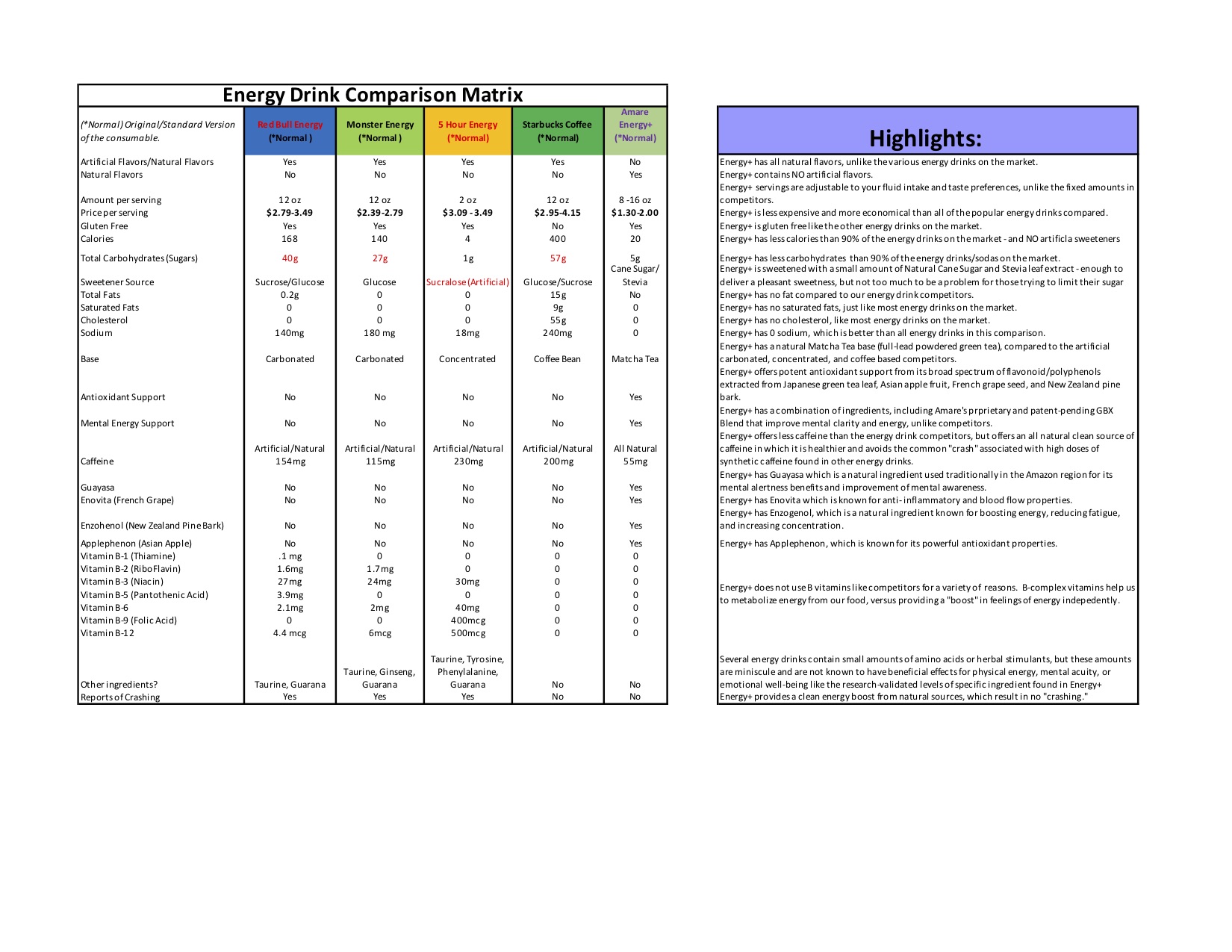In a recent expert commentary in the Sports Medicine Bulletin of the American College of Sports Medicine, cardiologist Dr. John Higgins took issue with the safety of most energy drinks – please see the full article and see some highlights below.
Keep in mind, however, that not all “energy drinks” are the same – and when properly formulated, such as Amare’s Energy+ natural energy drink – they can actually be healthy and effective for improving physical energy, mental acuity, and emotional well-being (a multi-faceted “energy” similar to psychological vigor – the opposite of burnout).
Many thanks to my colleague, Michael Quach for helping to compile this article and comparison chart below – or here as a PDF = Energy Drink Comparison

In 2017, the energy drink market is expected to generate over $21 billion dollars alone! As the demand continues to increase, the demographic of consumers that are seeking a energy boost is becoming more popular in the younger population! (1) This poses true safety concerns and effects the largest and most vulnerable portion of humans today!
- According to Dr John P Higgins (M.D, FACSM, FACP, and Chief of Cardiology @ Harris Health Systems) (2)
- There are many safety concerns with energy drink consumption, that include adverse effects to the cardiovascular, neurological, gastrointestinal, and endocrine systems. Dr John P Higgins highlights the main issue that these energy drinks are accessible to anyone and:
- Should not be consumed by children or adolescents
- Should not be used for hydration by children and adolescents, and information about the absence of benefit and potential adverse effects should be provided to those who interact with young persons
- Should neither be available for sale in K-12 schools nor advertised to children who attend such schools
- Should not be marketed to (nor consumed by) vulnerable populations, including:
- Those younger than 18 years
- Pregnant or breastfeeding women
- Caffeine naive or sensitive individuals
- Those taking stimulant or caffeine-based medications
- Those with certain cardiovascular or medical conditions.
- Should be avoided before, during, or after strenuous activities, until such time that proper safety and efficacy data are available.
- Should not be marketed premixed with alcohol or consumed with alcohol.
- May contain high levels of carbohydrates and calories, which can contribute to obesity.
- Should not be consumed close to bedtime.
- There are many safety concerns with energy drink consumption, that include adverse effects to the cardiovascular, neurological, gastrointestinal, and endocrine systems. Dr John P Higgins highlights the main issue that these energy drinks are accessible to anyone and:
- In a nutshell, this $21 billion dollar industry is being driven by a poorly regulated product, with questionable efficacy, that is accessible by any population. This combination is incredibly risky and Consumers need to be aware of the potential risks of consuming these energy drinks, find a healthy alternative, or not drink them at all!
- https://brandongaille.com/20-significant-energy-drink-consumption-statistics/
- http://www.multibriefs.com/briefs/acsm/active032018.htm